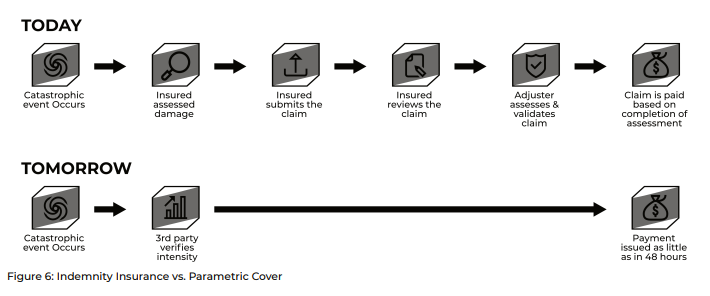| 09-09-2020 | Mark Roelands | treasuryXL
In this 4-Part series on Alternative Risk Financing, our Expert Mark Roelands highlights upon the importance of Alternative Risk Financing.
Part I reflected the alternatives of risk financing in the current hard insurance market. Now, Part 2 reflects upon the business case and how to build it, in order to enable decision making and finally decide whether to pursue the alternative risk financing route.
Building internal support is critical in getting to the go / no – go decision. Defining the Business Case will go hand in hand with generating internal buy-in by involving internal stakeholders like tax and legal during the analysis process. This blog will be about the business case set up, and how the relevant stakeholders should be involved during the process. The business case setup then is managed together with a companies’ internal dynamic. Let’s find out how to build the business case with the relevant components……..

Building the Business Case
As introduced in Part I, a structured framework is required in order to get to structured decision making. The framework used is the Risk Financing Framework by Roelands GRC Consulting. The main question on whether to start an in-house insurer is divided in 4 sub questions with 4 modules
1. Foundation> Achieve the risk finance objectives
What is your strategy with respect to retaining risks? What risks are you willing to retain?
As a treasury department for instance, the currency exposures are managed and hedged. To a certain degree, hedging is either too costly or priced into forwards (with limited risk transfer implications). This also applies to insurable risk. A certain level of claims can be expected which will either be within the deductible level or priced into premiums. Critical is to understand what volatility is acceptable to the organisation. Stakeholder expectations and requirements can be key determinants. What headroom is available on financing arrangements and on what percentage deviations will supervisors and auditors start to raise questions? What quarterly earnings deviation would be possible, and has Covid19 changed that position? Bottom line, in most alternative risk financing structures the corporate retention is increased, and a crucial question therefore is when a negative scenario unfolds are you able to defend the impact of the insurable risk retention?
What is the ultimate objective to be achieved?
2. People & Organisation > Matching the organisation, policies and people
How would an in-house insurer fit within your organisation? This is about aligning internally on the conditions that need to be met for an in-house insurer. There are several countries or domiciles, and several forms of captive insurance which are possible. Within the organisation risk management resources and governance structures need to be aligned. Hence,
What form of captive would match your organisation best?
The trend in domiciliation, which is strengthened by BEPS, is offshoring or onshoring and to choose a domicile where there is substance. A treasury centre domicile would be a good alternative, as is the HQ domicile or certain domiciles which have a big captive insurance support industry. Within Europe, this would be Ireland, Luxemburg, Guernsey or Malta. Going outside of the HQ domicile may have some obvious tax consequences that will need to be addressed with the colleagues from tax. A Cell Company could be an interesting alternative, but it is important that this is understood correctly within the organisation (more on this in Part 3 of this series). The Legal department will need to be involved, and as this will have domiciliation implications, the Tax department as well. As a larger part of risk is retained within the company, it is critical that risk management processes are directed to managing the risk, and certain functions may need to be involved as well. For instance when employee benefits is a risk to be underwritten, then HR will definitely be involved as coverage provided is key.
Depending on the type of captive that is established and in what domicile certain governance structures may need to be established (for instance in the Netherlands, the Corporate Governance Codes applied as a captive is an NV, implying 2 independent members of the Supervisory Board), service providers need to be found and external resources may need to be purchased. These will often become partners which the company will be working with for multiple years, so how will they be selected? Brokers and insurers offer their captive or alternative risk finance facilities, which may be very good, but there is a certain lock-in aspect to it.
Therefore, decisions need to be considered carefully.
3. Processes > Adaptive, effective and efficient operations
Relevant processes need to be established or adjusted to fit the new situation. From an operational point of view, adjustments will need to be made to ensure effective and efficient operations.
- Premium setting: Premiums will be based on indications received during the business case setup and claims analysis. Furthermore, they need to be allocated to operating companies on an arms’ length basis. This will require some analytical input. Usually, a fronting insurance company is involved in taking care of premium collection and direct policy issuance. Otherwise, that will need to be done by the captive as well.
- Claims handling: Which parties are involved in loss adjustment? Who is able to authorise claim payments? Will the fronting insurance company take care of it? As treasury or insurance function, there will already be some involvement. Retaining more risk provides a clear incentive for advancing control measures.
- Cash Management: Which bank is used by the captive insurer, and can it be connected to the cash pool? Different cash pool structures may have different capital implication.
For example, a Protected Cell Company may need to use a bank account outside of the home jurisdiction.
- Investment: Can the captive return liquid assets to the parent company?, or do local regulations require some investments to be held in certain (liquid) categories like government bonds?
- Capitalisation: the minimum level depending on the risk underwritten within the EU is EUR 1,2M, but usually the capital required is a multiple of this figure. Key benefit of a Cell Company is the capital efficiency (more on this in Part 3)
- Reporting: Usually done quarterly to the regulator and depending on internal requirements on a monthly basis
Sub question for the third part: How to align processes operationally, and to highlight relevant action points which will need to be addressed once a go-decision is made.
4. Data and Technology > Generating an optimal Total Cost of Risk
Deciding on whether or not to start an in-house insurer requires a well worked out quantified business case, based upon different scenarios in order to judge the risk appropriately. In order to generate a fair comparison, a total cost overview will need to be made. This compares the total costs, which will be paid externally i.e intercompany flows like premium to the inhouse insurer will thereby be excluded. Sub question of part four is whether the business case makes sense from a financial perspective. Which costs are in scope will be determined by the analysis resulting from the previous 3 steps. The simplified example business case below describes an imaginative Netherlands based captive insurance company. Although figures are purely indicative, the size of the amounts is representative of a captive business case.
Example Financial Business Case
|
|
| x 1.000 |
Continuation – Expected |
Captive – Expected |
Captive – Negative |
| |
| Total External Insurance Premium |
10.000 |
7.500 |
7.500 |
|
| Total Losses Retained |
|
|
|
| Below deductibles |
1.000 |
1.000 |
1.000 |
| Above (sub) limits |
0 |
0 |
0 |
| Excluded cover |
0 |
0 |
0 |
| Within in-house insurer |
0 |
750 |
5.000 |
|
| Operational costs |
|
|
|
| Insurance Premium Tax |
2.100 |
2.100 |
2.100 |
| In-house insurer costs |
0 |
350 |
350 |
| Insurance function costs |
200 |
250 |
250 |
| Risk Management costs |
15 |
15 |
15 |
|
| Total Costs |
13.315 |
11.965 |
16.215 |
| Change |
– |
1.350 |
-2.900 |
|
| Capital Required |
– |
3.800 |
3.800 |
Premium observations
- Sufficient premium volume is required. In the example, EUR 2,5 M premium reduction is assumed which will then be retained in-house and thereby is not part of the total (external) cost.
- IPT will also have to be paid on the captive premium (@21% in the Netherlands)
Losses retained observations
- Flip side of a significant premium reduction is a significant retention in the captive. In the below example at least EUR 5M is assumed, which will be hit in the negative scenario.
- Usually this is complemented with an annual aggregate limit in order to limit losses in the entity
- Part of the business case setup entails a careful claims analysis to make appropriate assumptions
Cost observations
- Operational costs : accounting, actuarial, audit, independent supervisors as well as a cost allocation for the time used from the insurance manager/function
- This will need to be outlined in different scenarios for decision making
Overall observation
Bottom line, in the expected scenario here a positive result is projected, but when an incident occurs a negative result (compared to traditional insurance) is projected. This is a very common trade-off requiring a deliberate choice.
Summary
Deciding to start captive insurance is a structural decision (and forms a multiyear commitment) requiring a structured approach, it may help to involve external expertise from a broker, insurer, actuaries, or independent consultants as each business case is specific. The overview in this blog however does describe the main steps and considerations to be taken. When this business case is carefully set up, assumptions clearly described and financial projections are well worked out, this then already provides a solid basis for applying for an insurance license. The initial effort will pay-off at the end, so do not rush the decision making process
This is Part 2 of the Alternative Risk Finance Series, Part 3 will be “Cell Companies 101” and Part 4 will be “Risk Trading and Future Alternative Risk Finance”. Together this generates an overview of the current and future landscape of alternative risk financing.

Mark Roelands
Risk and Compliance Specialist















